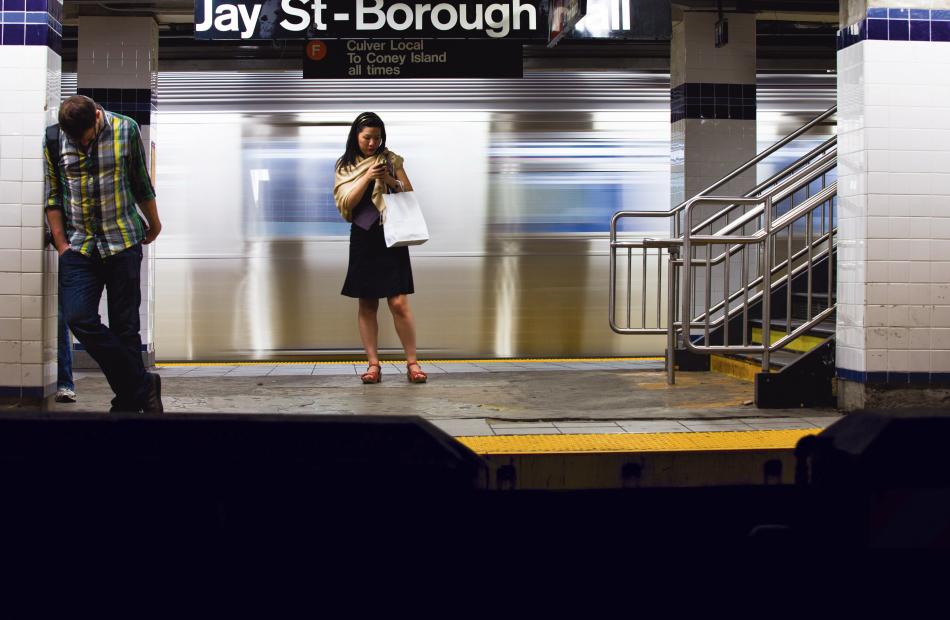From Auto #18: Creating safe journeys for women
For millions of people public transport is a major source of mobility. Yet for 50 per cent of the population it can present a threat. With harassment and abuse of women on public transport on the rise, the FIA Foundation is tackling the issue.

Click here to read the full Auto #18 magazine.
At the most extreme, there are the cases that have attracted widespread notoriety and coverage such as the horrific assault on Jyoti Singh in Delhi. Jyoti, a 23-year-old physiotherapy intern, was attacked – beaten and sexually assaulted by a group of men on a bus in 2012. Singh died of her injuries within two weeks of the attack and her case received widespread attention both within India and internationally. It sparked a wave of mass public protests; thousands marched across India, against both the state and national government for failing to provide adequate security for women. The assault on Singh drew attention to concerns about women’s safety across society in India, with an upsurge of reports highlighting the prevalence of attacks in the country. It was an issue that previously had received little attention, and the public reaction worldwide signalled the extent of the problem globally, with women reporting a lack of security particularly on public transport in many countries. It’s an issue the FIA Foundation has followed up on, launching an in-depth ‘women in transport’ research project. Increasingly worldwide, women are frequent and regular users of public transport. In developing countries they often rely on some form of public transport as their only choice of motorised transport. Yet at the same time, there are a growing number of incidents reported where women have had their security compromised. While Singh’s case and other high-profile attacks have caught the media’s attention, there are many more cases of women being subjected to aggressive behaviour, verbal abuse and sexual assault on public transport that are not publicised.
The FIA Foundation’s initial report ‘Safe & Sound: International Research on Women’s Personal Safety on Public Transport’ shows that women face harassment while using public transport on a daily basis all over the world. The report is part of the FIA Foundation’s Safe, Clean, Fair and Green research series that reflects key priorities in sustainable mobility. Harassment and assault is reported as an issue of concern from Baku, Azerbaijan to Bogotá, Colombia – and everywhere in between. It is not confined in any way to the developing world, however, and appears to be as prevalent in high-income, industrialised cities such as London, New York or Paris. All forms of harassment can affect women’s access to opportunities and their quality of life. Harassment can take various forms: verbal abuse (cat-calling or unwanted teasing), visual harassment such as leering or staring, and physical abuse such as men exposing themselves, groping or other forms of touching. This abuse often occurs in public spaces as women travel to and from places of education, schools or to and from work. It also takes place in or around bus and train stations, at bus or other public transport hubs and stops, and on vehicles themselves – particularly if they are crowded.
EVERYDAY PROBLEM
The extent of the problem is shockingly widespread. It is clear that harassment and assaults occur more often than is thought. The FIA Foundation report shows that women face harassment while using public transport every day worldwide.
Research carried out by Hollaback and Cornell University based on 16,600 interviews in 22 countries found that 80-90 per cent of women had been harassed in public. The research found that a majority of German women – 66 per cent – have been groped or fondled and 47 per cent of Indian women had witnessed someone exposing themselves in public. Women are often reluctant to go to the authorities. High rates of non-reporting of incidents were found internationally: in New York it is estimated that 96 per cent of sexual harassment and 86 per cent of sexual assault on the subway goes unreported; in Baku, Azerbaijan, none of the 162 out of 200 women who said they had been sexually harassed on the metro reported it to the appropriate authority. In Egypt, of 1,000 women surveyed, only 2.4 per cent of the 83 per cent of Egyptian women and 7.5 per cent of the 98 per cent of foreign women living or travelling in Egypt who had experienced sexual harassment in a public place reported it. There is a lack of available information on women who have either reduced their aspirations to increased mobility or changed their travel patterns due to concerns over personal security, so it is not easy to gauge the effect of this undesirable behaviour. But it is likely to have a larger impact on women contributing to society and the labour force than is currently understood. It’s already acknowledged that all forms of harassment – sexual or other – affect women deeply, causing psychological distress, reducing confidence and impacting the ability to move freely in public places. If this is directly associated with their transport options, it will affect decisions to take up educational opportunities, join the labour market and influence the kinds of jobs they pursue.
As report author Heather Allen explains: “This is an issue that has much wider consequences than personal security and we need to learn more about how to address it. Reducing the global workforce due to transport security reasons will strongly impact our future development, especially in the developing world. Women can be a strong force for change and we should harness this potential rather than waste it.”
It’s clear that women play a strong role in influencing the value sets of their children. If they pass on to them a negative value judgement about using public transport, based on their experience and perceptions, it can hinder efforts to increase the use of mass transport in the future. As this is a core pillar of sustainable mobility, especially as the world becomes increasingly urbanised, by not addressing this issue we are merely setting the system up to fail. Children will grow up with a view that transportation is inherently unsafe, and as soon as they can they will prefer to buy or share a car, motorbike or scooter – creating a vicious downward spiral of increased congestion, even if every vehicle is cleaner than today. There is little doubt that getting more women into the workplace will have a positive impact on putting the global economy back on track. The McKinsey Global Institute estimates that if women in every country were to play an identical role to men in markets, as much as US$28 trillion would be added to the global economy by 2025. If we also accept that there are many young girls who would like to work when they grow up and link this to the recent findings of the ILO on youth unemployment – with almost 43 per cent of the global youth labour force in 2015 being either unemployed or working yet living in poverty – we can see that by addressing this issue we can unlock significant opportunity for growth. Women can and should be able to play a role in society and it is important that women are able to fully contribute to a country’s development. Excluding women from being active in the labour market, for any reason, should be considered to be out of order in today’s world; it will reduce both the speed and robustness of sustainable, economic development. If the reason for exclusion is due to transport inequalities, we can do something about it, but only if we manage to take it out of the security arena and put it firmly in the development agenda. Both aspects are interdependent – the more active women are in the labour market the more they are able to demand safe and secure transport; the less empowered they are, the more socially exclusive transport becomes. Reserving separate carriages for women may be a temporary solution, but it also underpins the concept that women should be kept apart and not be given equal rights. By addressing both ends of this equation we can create a win-win-win situation – addressing equity, economic empowerment and improving quality of life. Together with CAF, the Development Bank of Latin America, the FIA Foundation is now undertaking further research with the aim of developing policy recommendations to make the journeys for half the world’s population safer, enjoyable and more secure.

 Facebook
Facebook Twitter
Twitter






